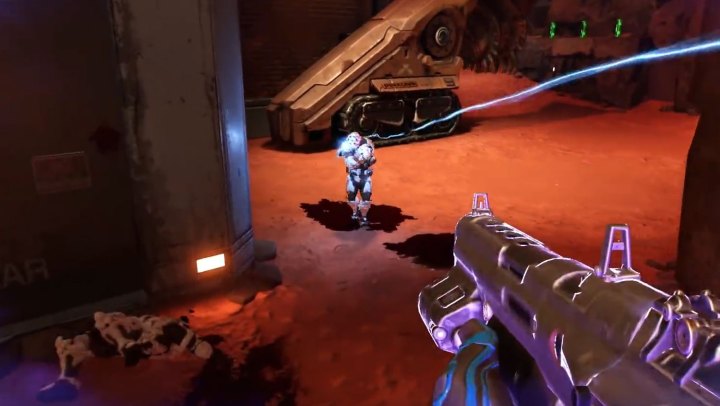
Of course, that listing is gone now that the open beta has ended. However, the backlash was heavy enough for id Software to jump onto Bethesda’s website and address a number of complaints, which include graphical issues like capped frame rates and the inability to change video settings within the beta. Thankfully, the Bethesda-owned developer says the final PC version, slated for May 13, will definitely not have capped frame rates, so don’t fret.
“Further, the PC version of Doom will expose a comprehensive set of advanced game and rendering options that will allow players to dial the experience up or down based on their individual desires or hardware capabilities,” says id Software Chief Technology Officer Robert Duffy.
Specifically, the frame rates will be uncapped, while the game will support 21:9 monitors in the process. Doom will also provide a number of advanced settings so that PC gamers can set the desired balance between performance and eye candy. A long list of expected settings is provided in Duffy’s response including a lens flare toggle, a motion blur quality toggle, reflections quality, UI opacity, and loads more.
“We also know many of you are interested in some deeper insight into the types of fundamental changes we’ve made to our engine technology over the last few years,” Duffy adds. “In the coming weeks, we’ll be giving you an inside look at idTech 6 engine architecture, our rendering pipeline, our customization tech and other initiatives we have underway to broaden our minimum PC spec even further than our current expectations.”
Unfortunately, the graphical issues weren’t the only complaints made by Steam gamers playing the open beta. Many complained that movement was just too slow, and that the weapons weren’t balanced correctly. For example, a shotgun blast in the face was nearly an instant kill, while it took a number of rockets to take down an opponent (splash damage was supposedly not very effective).
Many of the complaints we saw on Steam said Doom was a mash-up of Halo and Call of Duty. However, probably the biggest criticisms involved the game’s loadout and progression systems, which are new to the Doom franchise. Bethesda and id Software have heavily promoted the multiplayer aspect, indicating fast, arena-based gameplay, but hopeful open beta players found it to be otherwise.
With the game going gold next month, making last-minute changes to the multiplayer aspect to appease the longtime core Doom fans will likely not happen. It is what it is apparently, and fans will have to place their faith in the single-player campaign when hoping for a trip back to the glorious days of classic run-and-gun shootouts in Doom. Hey, there’s always the classics on Steam to satisfy your cravings if the new installment doesn’t cut it.
Until the final version hits stores next month, you can check out our hands-on with the closed multiplayer beta of Doom that took place in early April right here.


